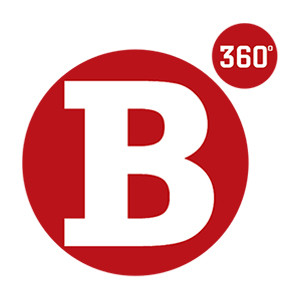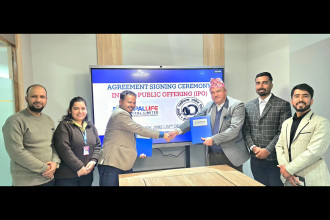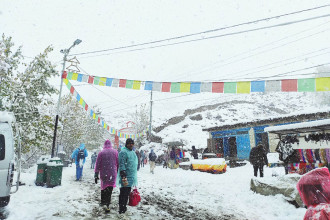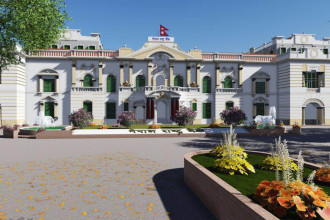-1754628872.jpeg)
KATHMANDU: NAIMA Nepal Mobility Expo 2025 hosted a learning session on ‘Workforce, development, mobility and employment’ at Bhrikutimandap in Kathmandu, on Thursday.
The expo opened on Wednesday under the banner of NAIMA Nepal Mobility Expo 2025.
Moderated by Ashutosh Tiwari, Founder of SAFAL Partners, the session drew students from Pulchowk Institute of Engineering, young professionals and media representatives to discuss workforce development in Nepal’s mobility sector.
Pramod Bhakta Acharya, Director of the Council for Technical Education and Vocational Training (CTEVT), explained that courses designed by experts lead to over 80 per cent employment for graduates. He added that, with government intervention, the forthcoming workforce can be better aligned with industry needs.
Ananda Paudel, team leader for the National Vocational Qualification System, advocated for closer collaboration between industries and training institutions. He urged NAIMA to facilitate open discussions that bring all parties together to identify skill gaps and train individuals to manage operations effectively.
-1754628872.jpeg)
-1754628876.jpeg)
-1754628873.jpeg)
-1754628873.jpeg)
Suryansh Vaidya, Director of the Vaidya Organisation of Industries and Trading Houses (VOITH), highlighted the rapid transformation of the mobility sector and pointed out that Japanese manufacturers such as Toyota already employ skilled Nepali workers. He said he sources most of his new hires directly from universities, but cautioned that even matching overseas compensation packages often fails to keep top talent in Nepal.
Raj Kumar Chaulagain, assistant professor of mechanical engineering at the Institute of Engineering, Tribhuvan University, said innovation comes when students apply their learning through practical demonstrations. He noted that, within reasonable constraints, the university offers courses in engine repair and automotive manufacturing.
Throughout the session, moderator Tiwari steered the conversation towards practical solutions and recommendations for NAIMA, posing pertinent questions to inform and engage the audience.






